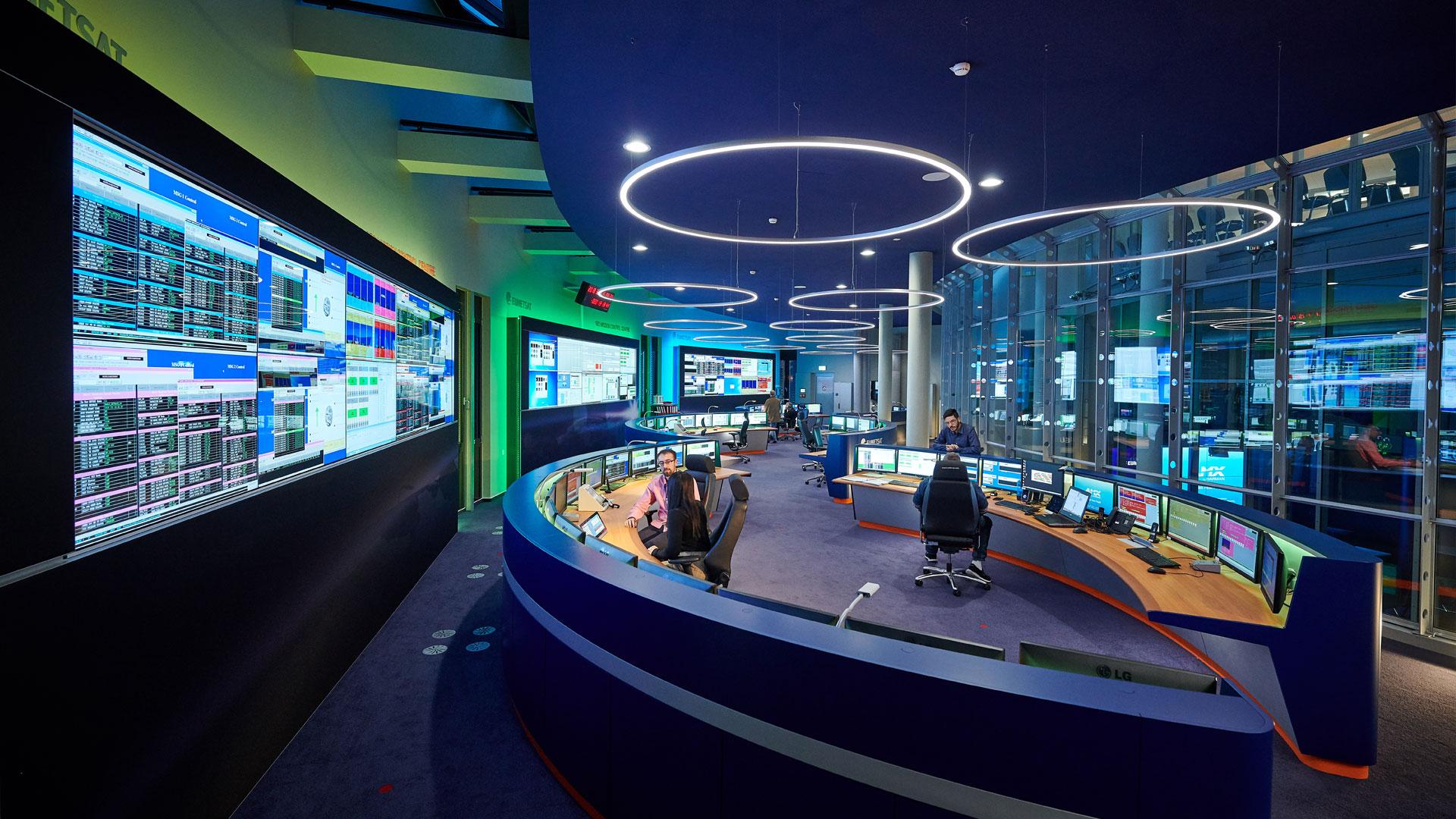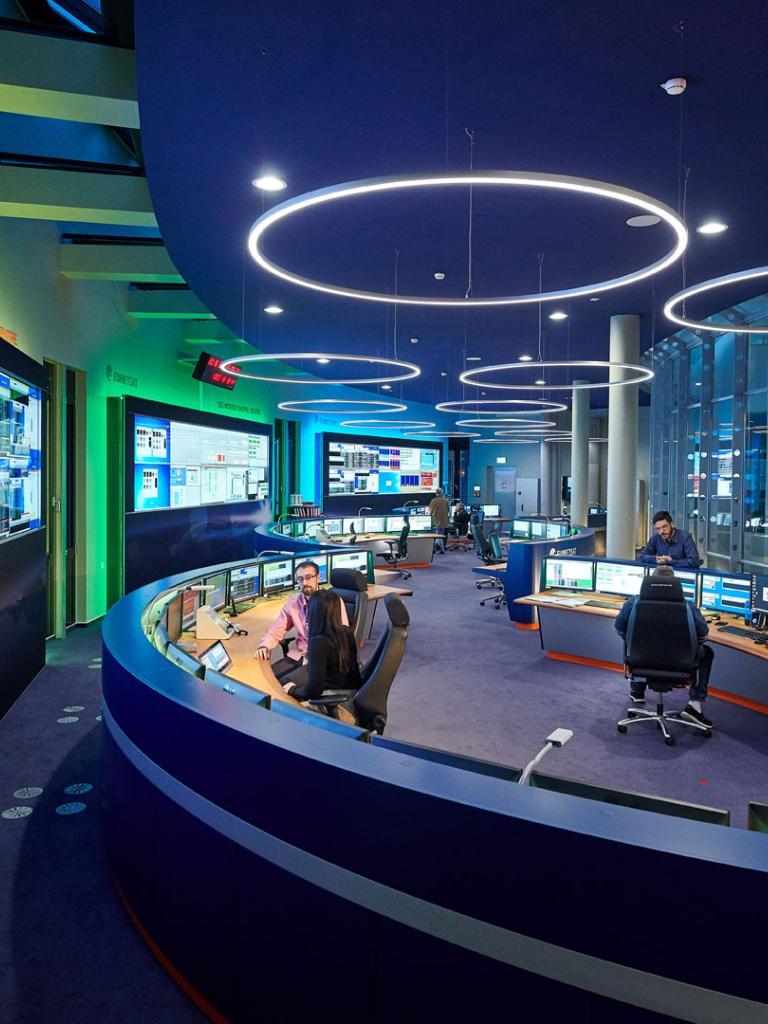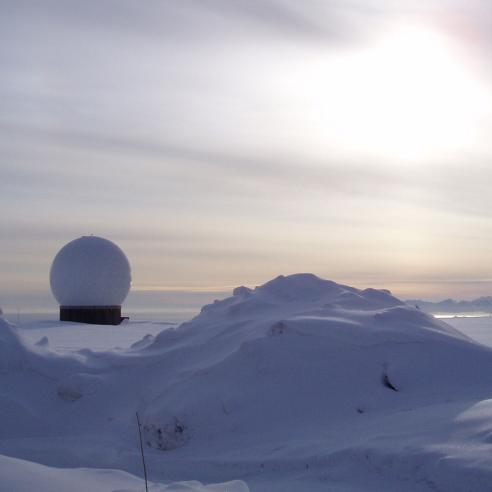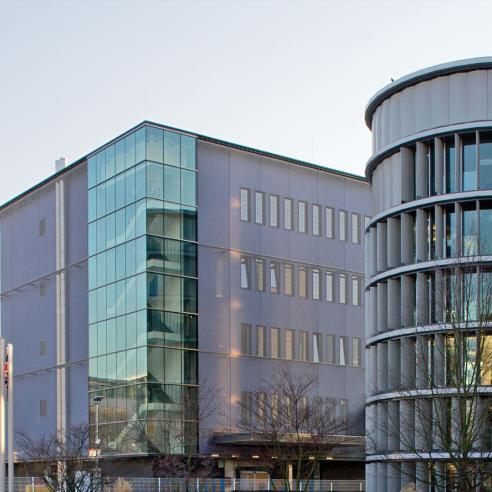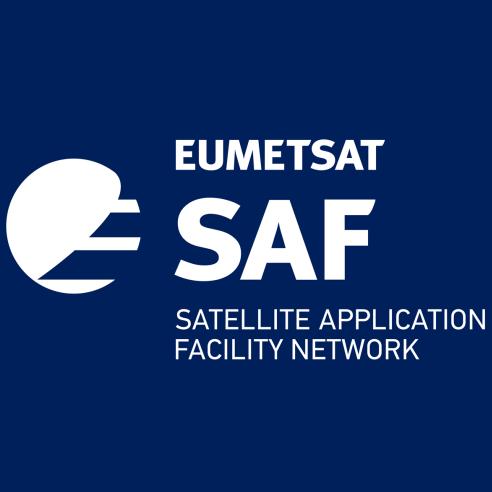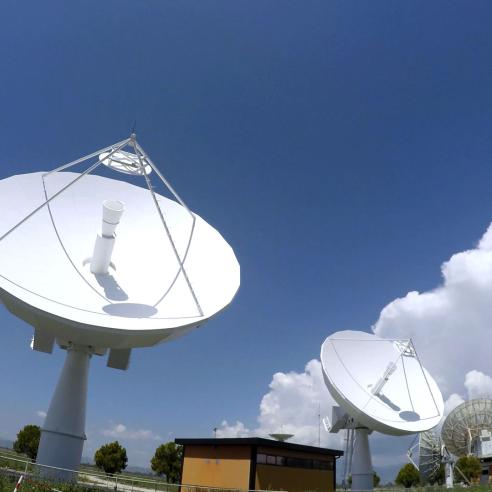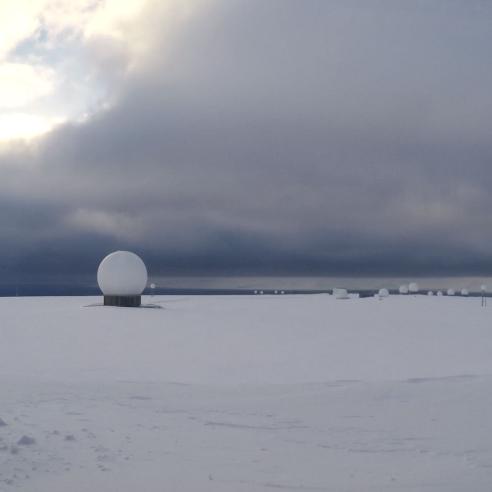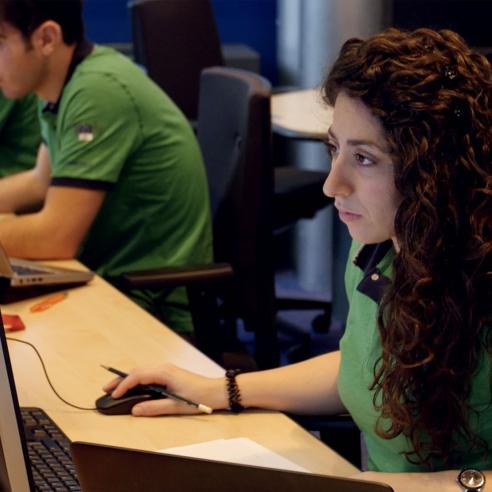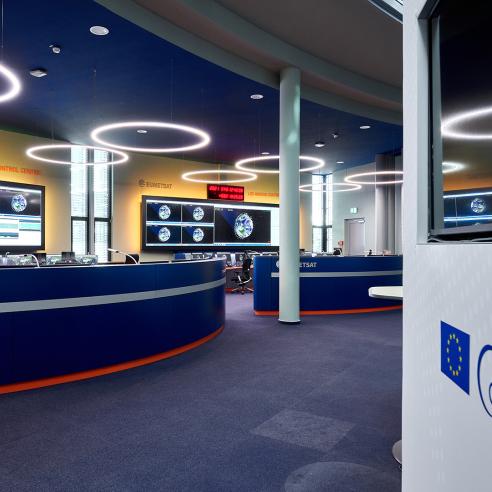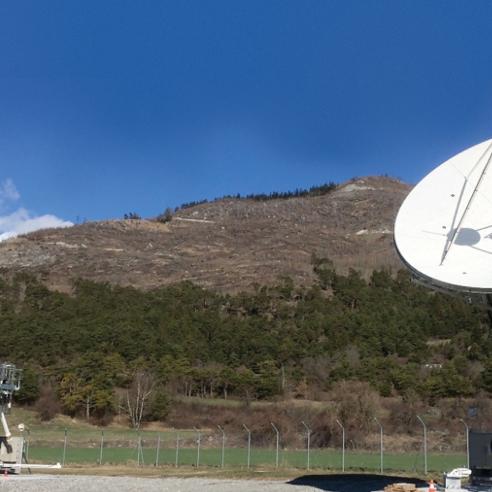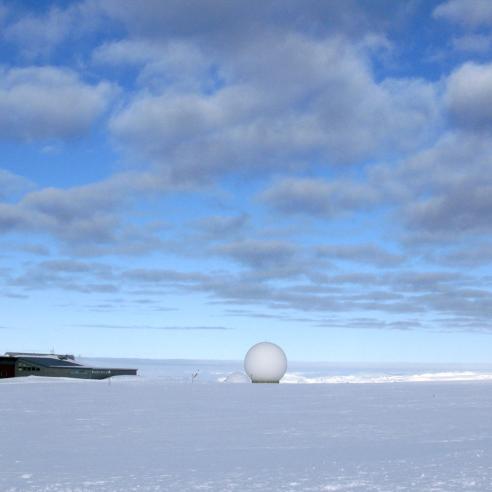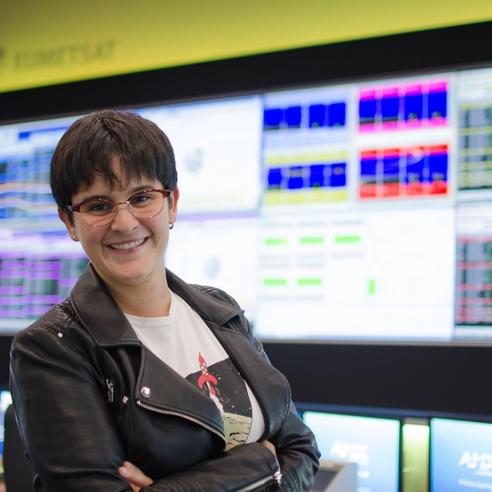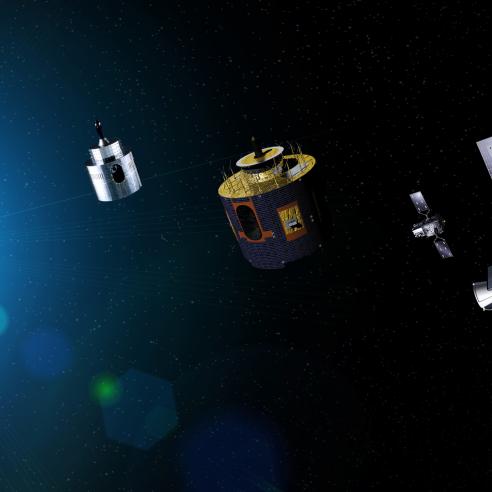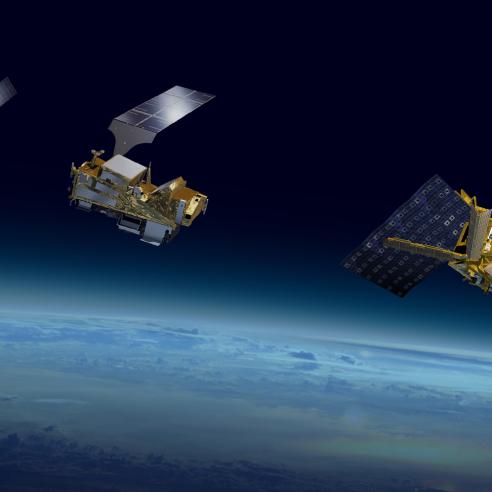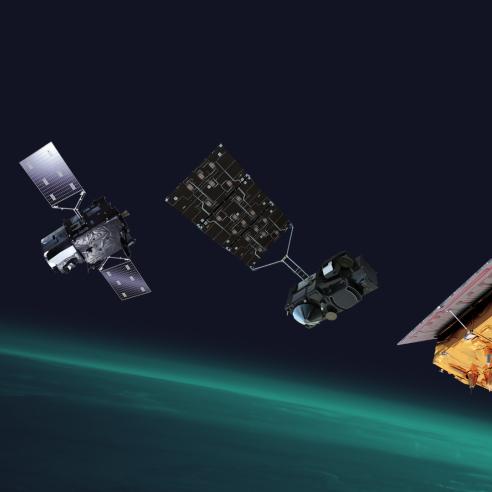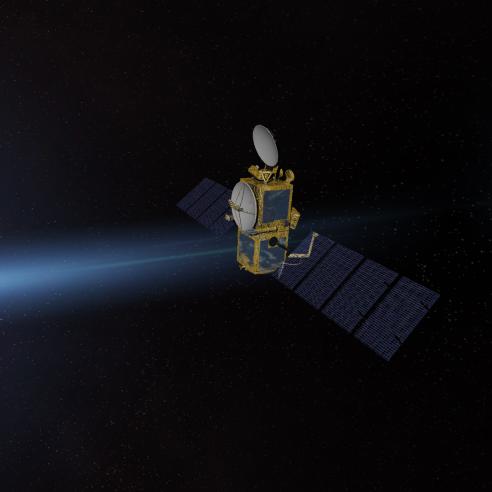17 May 2022
15 May 2020
There are two main energy-efficient control rooms for the geostationary missions and and low Earth orbit missions, plus the Copernicus control room which operates Sentinel-3 and, later, Sentinel-6.
The MCCs provide the necessary monitoring and control of all operational satellites and the associated ground infrastructure and ensure the continued communication with, and data acquisition from, satellites though a network of primary and back-up ground stations distributed across Europe. Teams of satellite and ground segment controllers work around the clock, supported by teams of on-call operators and maintenance engineers.
Control Centre functions and stations
Geostationary Mission Control
- Functions
- Performs spacecraft monitoring and control for:
Meteosat Second Generation (MSG) Prime 0º , IODC and Rapid Scanning Service. - Ground segment monitoring and control service monitoring.
- Performs spacecraft monitoring and control for:
- Primary Ground Station
- Meteosat Second Generation — Fucino, Italy and Cheia, Romania
Information on the Meteosat Third Generation Ground Segment.
The GEO MCC is now equipped to control the current fleet of four Meteosat Second Generation satellites, as well as the upcoming Meteosat Third Generation fleet, which will start to be deployed from 2021. Information on the Meteosat Third Generation Ground Segment.
The MCC incorporates the latest technology to provide a more flexible, energy-efficient and secure workplace that is also more dynamic and productive for spacecraft and ground controllers.
Low Earth Orbit Mission Control
- Functions
- Performs spacecraft monitoring and control for:
Metop-B and Metop-C services - Support to the other satellite operations:
Blind orbit support for NOAA-19
Jason-3 Earth Terminals - Ground segment monitoring and control service monitoring.
- Performs spacecraft monitoring and control for:
- Primary Ground Stations
- Metop — Spitsbergen, Svalbard
- Jason-3 — Earth Terminal, Usingen, Germany
Spacecraft Commanding and Control
Spacecraft commanding is highly automated. Each satellite system uses a mission planning system, in conjunction with a flight dynamics system, to produce a weekly automated schedule.
This schedule is used to send automated procedures to both the spacecraft and the ground facilities.
Verification of successful completion of the procedures comes back to the monitoring and control system in the spacecraft and ground facility telemetry. The health of the spacecraft is also monitored by the same system.
Monitoring scientific telemetry and data processing
The scientific satellite data acquired by the instruments, on-board the operational satellites, are received by the dedicated ground stations and relayed to EUMETSAT headquarters for processing in the EUMETSAT-based Application Ground Segment and the distributed network of Satellite Application Facilities (SAFs) within Europe.
The MCC performs the end-to-end analysis of the service performance, including the ground stations, and; the Central Facility data processing facilities, and the data dissemination systems, e.g. EUMETCast and AHRPT. Scheduled and unplanned outages, arising as a result of malfunction of these systems, are notified to the user via the User Notification Service.
Back-up control centre
Each satellite mission has a back-up control centre to ensure spacecraft safety in the event of major problem with the MCC, or communication loss between the MCC and the ground station. Activation exercises take place regularly to ensure operational readiness.
The back-up centres are located in:
- Meteosat Second Generation: Telespazio 'Piero Fanti' Space Centre in Fucino, L'Aquila, Italy
- Metop: Instituto Nacional de Tecnica Aeroespacial (INTA) in Torrejon de Ardoz, near Madrid, Spain
